Get Rid of Hangnails with These 8 Natural Treatments
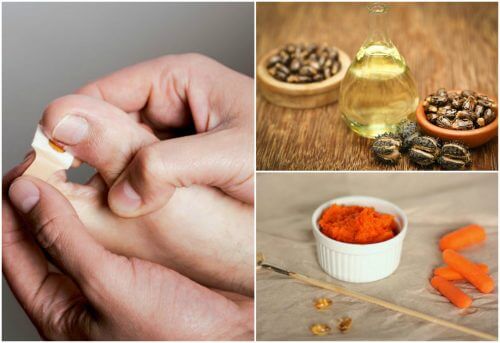

Reviewed and approved by the pedagogue in physical education and nutritionist Elisa Morales Lupayante
Hangnails are a common but annoying issue. Usually caused by improper nail clipping, they can easily get infected. Here are eight easy remedies to naturally get rid of hangnails!
Basically, hangnails are an inflammation of the skin around your nails that happens when they get ingrown or are clipped improperly. They can be rather bothersome, and cause pain in your fingers or toes and sometimes even pus and infection. They’re no serious health problem, but they do require attention to prevent worse pain and irritation.
When left unattended, hangnails can even cause the removal of the ingrown nail. This allows for better healing when the hangnail has become infected and needs to be treated with local antibiotics. Several researchers have developed less invasive treatments, especially when it comes to hangnails in children.
Fortunately, thanks to the properties of certain natural ingredients, you can make treatments at home to speed up their healing. Our DIY recipes are antibacterial and moisturizing, and once applied, they help to repair the affected area and avoid further problems. Try them!
DIY recipes to get rid of hangnails
1. Vitamin E oil
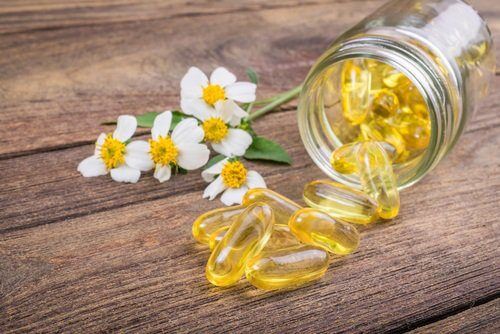
Vitamin E oil is one of the most widely recommended natural remedies for treating hangnails and ingrown nails. It has moisturizing properties; thus, its moisturizing ability encourages the skin to heal itself while softening hard areas. In turn, this makes it easier for the nail to be extracted.
How do I use it?
- First, squeeze a capsule of vitamin E open and smooth the oil over the affected area until absorbed.
- Then, let sit without rinsing and use up to 2 times a day.
Read this, too: Lighten Your Elbows and Knees with this Homemade Milk and Vitamin E Cream
2. Castor oil
Castor oil contains nutrients and essential fatty acids that strengthen nails but it’s also a great solution to repair the delicate skin around them. Rubbing castor oil will help to get rid of hangnails by lowering inflammation and preventing infection.
How do I use it?
- First, smooth a bit of castor oil around the hangnail and let sit for 20 minutes.
- Finally, rinse the stickiness away and repeat 3 times a day.
3. Honey
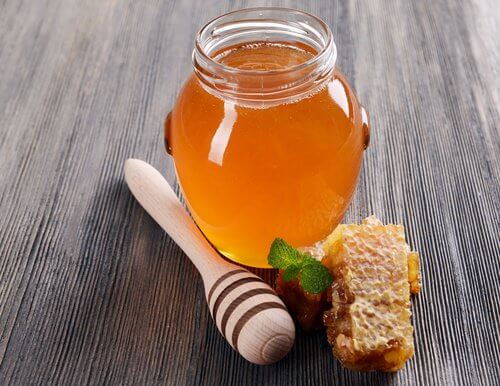
Powerful, wonderful honey is another natural product that helps keep your nails moisturized and strong. The enzymes and antioxidants in it repair weak cuticles and create a protective barrier, protecting them from hangnails and infection. Moreso, honey also has antibacterial properties that will help fight off infections.
How do I use it?
- Start by smoothing a generous amount of honey on the areas you wish to treat and let it sit for at least 30 minutes.
- Then, rinse with cold water and repeat every day.
4. Thyme tea
The anti-inflammatory and antibiotic qualities of thyme speed up the recovery of hangnails while protecting the skin from infection. Thus, regular use strengthens cuticles and helps keep the area moisturized. This will keep it from getting hard.
How do I use it?
- Start by making a strong cup of thyme tea and soak your nails for 10 minutes.
- Then repeat every day until you see improvement.
5. Almond flour
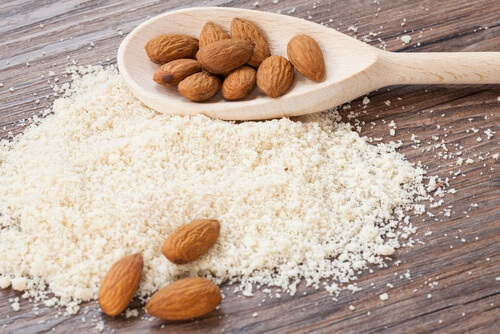
The fatty acids and protein found in almond flour work together to hydrate and heal the skin affected by hangnails. Applying it as an exfoliant helps get rid of dead skin cells and reduce inflammation, thus reducing the pain.
How do I use it?
- First, moisten a bit of almond flour with water and apply the paste to your nails and fingers with gentle circular massing motions.
- Let sit for 15 minutes and then rinse.
- Use 2 or 3 times a week.
6. Carrots
This carrot mask provides nutrients to your cuticles and helps eliminate dead skin cells. In turn, this will help prevent hangnails and calluses. Carrots contain high levels of beta-carotene and essential minerals which get absorbed by your skin and speed up healing and regeneration.
How do I use it?
- First, boil a carrot. Once soft, mash with a fork until a paste is formed.
- Then, apply the mask to your fingers and let sit for 20 minutes.
- Finally, rinse and repeat 3 times a week.
We recommend reading: 5 Signs Your Fingernails Use to Show You Something’s Wrong with Your Health
7. Lemons
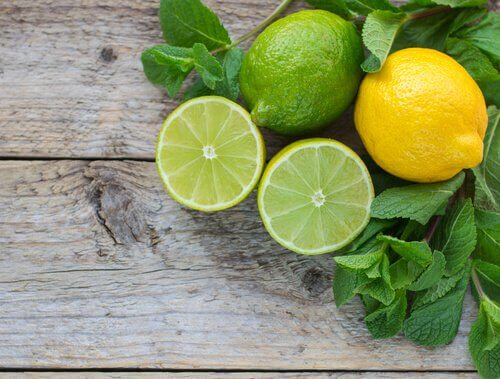
Lemon contains acidic substances that can burn when it comes in contact with your skin. Nevertheless, because it is a natural antibiotic and has antioxidants, it is a good treatment to help with hangnails and infections. Due to its beneficial effects, lemon repairs the affected skin and controls inflammation and pain.
How do I use it?
- First, cut a lemon in half and rub onto the affected area.
- Then, let sit for 10 minutes and then rinse.
- Finally, use at night, 3 times a week.
8. Sea salt
The anti-inflammatory and antibiotic powers of sea salt can be used to help with hangnails and ingrown nails, thus, it’s ideal for softening hardened spots and removing dead skin cells that accumulate in your cuticles. Moreso, salt also offers great protection against infection: if your hangnail is already infected, try sprinkling table salt in the wound. Pus will slowly get drawn out and you might even skip a visit to the doctor! Get rid of hangnails with this simple sea salt soak for hands and feets:
How do I use it?
- First, add half a cup of sea salt to a container filled with warm water
- Then, soak your feet or hands for 20 minutes.
- Finally, repeat 3 times a week.
Do you have annoying hangnails? It might be worth taking a look at your nail clipping techniques: to get rid of hangnails you have to find the cause. In the meantime, start by making these simple treatments and adding them to your beauty routine.
All cited sources were thoroughly reviewed by our team to ensure their quality, reliability, currency, and validity. The bibliography of this article was considered reliable and of academic or scientific accuracy.
- Baboun, D., Yaghi, M., Keri, J., & Morrison, B. (2024). Natural Treatment Options for Nail Disorders. Skin Appendage Disorders, 10(2), 83-91. https://karger.com/sad/article/10/2/83/870533
- Bhise, V. V., & Kale, V. R. Paronychia Treatment: Formulation and Evaluation of Polyherbal Cream. International Journal of Advanced Multidisciplinary Research and Studies, 4(3). 1488-1507. https://www.multiresearchjournal.com/admin/uploads/archives/archive-1719331628.pdf
- Bunyaratavej, S., Leeyaphan, C., Chanyachailert, P., Rujitharanawong, C., Kobwanthanakun, W., Phaitoonwattanakij, S., … & Lertrujiwanit, K. (2018). Safety and Efficacy of Fermented Olive Tree Leaf Extract for Treatment of Paronychia and Neoscytalidium dimidiatum Onychomycosis: A Pilot Study. Journal of the Medical Association of Thailand, 101(9). https://openurl.ebsco.com/EPDB%3Agcd%3A12%3A741980/detailv2?sid=ebsco%3Aplink%3Ascholar&id=ebsco%3Agcd%3A131637332&crl=c
- Di Lorenzo, R., Forgione, F., Bernardi, A., Sacchi, A., Laneri, S., & Greco, G. (2023). Clinical studies on topical curcumin. Skin Pharmacology and Physiology, 36(5), 235–248. https://karger.com/spp/article/36/5/235/870348/Clinical-Studies-on-Topical-Curcumin
- Keen, M. A., & Hassan, I. (2016). Vitamin E in dermatology. Indian Dermatology Online Journal, 7(4), 311–315. https://www.ncbi.nlm.nih.gov/pmc/articles/PMC4976416/
- Pazyar, N., Yaghoobi, R., Bagherani, N., & Kazerouni, A. (2013). A review of applications of tea tree oil in dermatology. International Journal of Dermatology, 52(7), 784–790. https://pubmed.ncbi.nlm.nih.gov/22998411/
- Relhan, V., & Bansal, A. (2022). Acute and Chronic Paronychia Revisited: A Narrative Review. Journal of Cutaneous and Aesthetic Surgery, 15(1), 1–16. https://www.ncbi.nlm.nih.gov/pmc/articles/PMC9153310/
- Rigopoulos, D., Larios, G., Gregoriou, S., & Alevizos, A. (2008). Acute and chronic paronychia. American Family Physician, 77(3), 339-346. https://www.aafp.org/pubs/afp/issues/2008/0201/p339.html
- Zagórska, M., Furman, D., Dudra, M., Zygo, K., Stanisławek, A., & Kapka, L. (2017). Evaluation of clinical effectiveness of Aloe vera-a review. Journal of Pre-Clinical and Clinical Research, 11(1). https://www.jpccr.eu/Evaluation-of-clinical-effectiveness-of-Aloe-vera-a-review-,74577,0,2.html
This text is provided for informational purposes only and does not replace consultation with a professional. If in doubt, consult your specialist.








